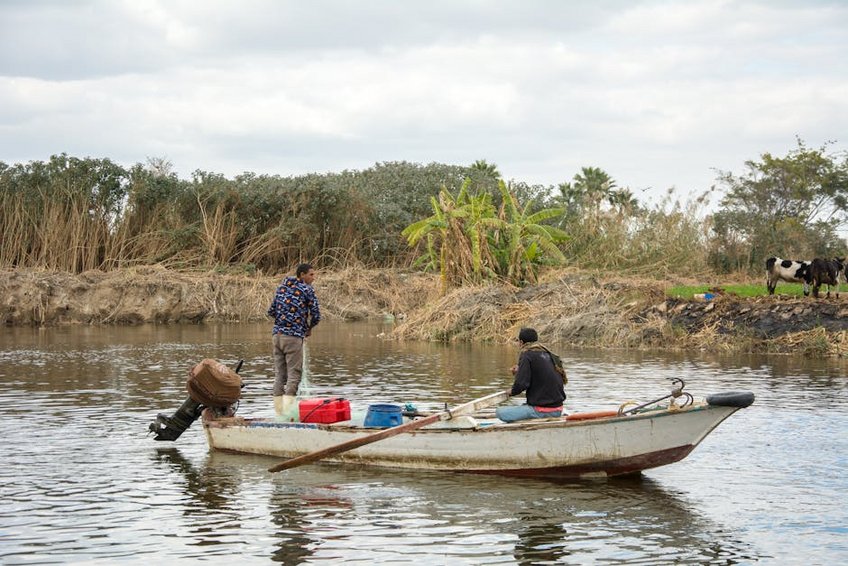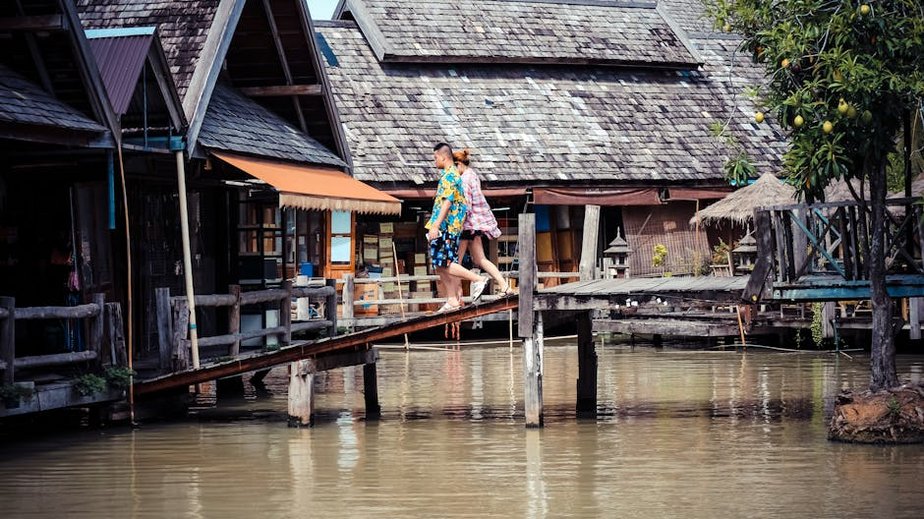Floating Village Lifestyle: Immerse Yourself in Unique Waterborne Communities
Experiencing the floating village lifestyle offers a fascinating glimpse into how communities thrive on water, adapting their daily lives to aquatic environments. When you visit these unique settlements, you’ll discover homes built on stilts or floating platforms, schools that bob with the waves, and markets where boats replace cars. This way of life, centered around rivers, lakes, or coastal waters, provides incredible resilience and a deep connection to nature. From Southeast Asia’s Tonle Sap to South America’s Amazon basin, each floating village has its own cultural nuances. Understanding the floating village lifestyle isn’t just about tourism; it’s about appreciating human ingenuity and sustainable living. As you plan your trip, you’ll find that this experience challenges conventional travel norms and offers profound insights. The floating village lifestyle embodies a harmony with water that many land-based societies have lost, making it a must-see for curious travelers. Prepare to be amazed by the simplicity and complexity of daily routines on water. This guide will help you navigate everything from cultural etiquette to practical logistics, ensuring your visit is respectful and enriching. Embrace the opportunity to see how families, businesses, and social structures function in these aquatic settings. The floating village lifestyle is more than a destination; it’s a lesson in adaptation and community.
Floating Village Lifestyle – Essential Information
Before diving into your journey, it’s crucial to understand what defines a floating village lifestyle. These communities are typically built on water bodies like lakes, rivers, or coastal areas, with structures designed to float or stand on stilts. The history of such settlements often dates back centuries, driven by factors like fishing economies, flood avoidance, or cultural traditions. You’ll find that the floating village lifestyle varies globally: in Cambodia, villages on Tonle Sap Lake are seasonal, moving with water levels, while in Peru, the Uros Islands on Lake Titicaca are made from totora reeds. Key aspects include reliance on boats for transportation, water-based livelihoods like fishing or aquaculture, and unique architectural solutions. Climate change and modernization pose challenges, but many villages preserve their heritage through tourism. When you engage with the floating village lifestyle, you’re witnessing a sustainable approach to living that prioritizes community and environment. This knowledge will enhance your appreciation and help you interact respectfully with locals. Understanding these fundamentals ensures your visit supports rather than disrupts the delicate balance of waterborne life.
What is a Floating Village? – Defining the Experience
- Floating villages are permanent or semi-permanent settlements built on water, often featuring houses on stilts, floating platforms, or artificial islands, where daily life revolves around aquatic resources.
- These communities typically rely on fishing, tourism, or crafts for income, with infrastructure like floating schools and markets that adapt to water level changes throughout the year.
- The social structure is tightly knit, with shared resources and collective decision-making, emphasizing sustainability and resilience against environmental challenges like floods or storms.
- Budget options: Hostels or homestays cost $15-30 USD per night, local meals $5-10, and public boat tours $20-40; ideal for backpackers seeking authentic floating village lifestyle experiences.
- Mid-range options: Comfortable guesthouses or eco-lodges at $50-100 USD per night, guided tours $50-80, including meals; balances comfort with cultural immersion.
- Luxury options: High-end floating resorts or private tours costing $150-300+ USD per night, with personalized guides and gourmet dining; perfect for those wanting premium floating village lifestyle access.
- Cambodia Ministry of Tourism – Official guide to floating villages
- Lonely Planet – Lake Titicaca floating islands information
Key Characteristics of Floating Communities
When you explore a floating village lifestyle, you’ll notice distinct features that set it apart. Architecture is adaptive, using materials like bamboo, wood, or reeds that withstand moisture. Transportation is predominantly by boat, from small canoes to motorized vessels, making waterways the equivalent of streets. Economies are often based on natural resources; for instance, in Vietnamese floating markets, vendors sell goods directly from their boats. Social life is community-oriented, with events like water festivals strengthening bonds. Environmental awareness is high, as villagers depend on clean water for survival. You’ll see innovative solutions like floating gardens or solar panels, blending tradition with modernity. These characteristics highlight the ingenuity required to maintain the floating village lifestyle, offering lessons in sustainability. As a visitor, observing these elements helps you appreciate the complexity behind seemingly simple lives. Remember, each village has unique customs, so approach with an open mind.
Floating Village Lifestyle – Planning Your Trip
Planning your visit to experience the floating village lifestyle requires careful consideration of timing, budget, and preparation. Start by researching specific villages that align with your interests, whether it’s cultural immersion or eco-tourism. The best seasons depend on water levels and weather; for example, dry seasons might offer easier access, while rainy seasons reveal the dynamic nature of these communities. Your budget should account for guided tours, accommodations, and local experiences, with options ranging from budget homestays to luxury floating lodges. Preparation involves packing appropriately for water-based activities, including waterproof gear and respect for local customs. Booking in advance is wise, especially for popular destinations, to ensure availability and support responsible tourism. Consider the duration of your stay; a few days allow for deeper engagement than a day trip. Health precautions, like vaccinations or water safety, are essential. By planning thoroughly, you’ll maximize your enjoyment and minimize your impact on the fragile floating village lifestyle. This proactive approach shows respect for the communities you’re visiting.
Best Time to Visit Floating Villages
The ideal time to experience the floating village lifestyle varies by location but generally hinges on water levels and climate. In Southeast Asia, like Cambodia’s Tonle Sap, the dry season from November to April offers lower water levels, making villages more accessible by land, while the wet season (May-October) showcases the true floating nature with higher water. For South American villages, such as those in Peru, the dry winter months (May-September) provide pleasant weather for exploration. Avoid monsoon seasons if you’re prone to seasickness, and consider cultural events like water festivals for a richer experience. Research local calendars to align your visit with optimal conditions, ensuring you see the floating village lifestyle at its most vibrant. Always check recent travel advisories for weather-related risks.
Budget Planning and Costs
Essential Preparation Checklist
To fully enjoy the floating village lifestyle, pack smartly with water-resistant bags, quick-dry clothing, and sturdy footwear for wet conditions. Bring eco-friendly sunscreen and insect repellent to protect yourself and the environment. Learn basic phrases in the local language to show respect, and carry small bills for purchases, as credit cards are rarely accepted. Ensure you have travel insurance covering water activities, and check visa requirements for your passport. Health-wise, consider vaccinations for waterborne diseases and pack a first-aid kit. Mentally prepare for a different pace of life; patience and flexibility are key. This preparation ensures you’re ready to embrace the floating village lifestyle responsibly.

Floating Village Lifestyle – Top Attractions and Activities
Immersing yourself in the floating village lifestyle means engaging in unique attractions and activities that highlight water-based living. Must-do experiences include boat tours through the village waterways, where you’ll see daily life up close, from children commuting to school by boat to fishermen casting nets. Visiting floating markets is a highlight, offering vibrant scenes of trade and interaction. Many villages have cultural centers or museums explaining their history, and hands-on activities like fishing or crafting with locals provide deeper connections. Nature enthusiasts can enjoy bird watching or kayaking through surrounding wetlands. The floating village lifestyle also offers culinary adventures, such as dining on freshly caught fish prepared in traditional ways. These activities not only entertain but educate, showing how communities thrive on water. Plan your days to include a mix of guided tours and independent exploration for a balanced experience. Remember, participation supports local economies, so choose ethical operators who prioritize community benefits.
Must-See Highlights in Floating Villages
Your floating village lifestyle tour should include key highlights like the central marketplace, where boats brim with produce and crafts, creating a bustling aquatic hub. Don’t miss the school or community center, often floating structures that demonstrate how education adapts to water life. Religious sites, such as stilted temples or churches, offer spiritual insights and architectural marvels. Another must-see is the fishing grounds, where you can observe traditional techniques passed down generations. In villages like those in Cambodia or Bangladesh, the floating gardens where vegetables are grown on water are fascinating. These highlights provide a comprehensive view of the floating village lifestyle, blending economic, social, and environmental aspects. Allocate time to interact with residents; their stories add depth to your visit. Photography opportunities abound, but always ask permission to respect privacy.
Hidden Gems and Local Favorites
Beyond the main attractions, seek out hidden gems to authentically experience the floating village lifestyle. Look for lesser-known spots like family-run workshops where artisans create boats or handicrafts using age-old methods. Join locals for sunrise or sunset fishing trips; these quiet moments reveal the rhythm of water life. Some villages have secret swimming spots or picnic areas on secluded platforms, offering tranquility away from crowds. Attend a community event if timing allows, such as a boat race or festival, where you’ll see the floating village lifestyle in celebration mode. Ask guides about off-the-beaten-path eateries serving homemade dishes not found in tourist areas. These experiences foster genuine connections and show the resilience and joy inherent in this way of life. Exploring these gems requires curiosity and respect, enhancing your journey beyond surface-level tourism.
Floating Village Lifestyle – Practical Travel Information
Navigating the logistics of visiting a floating village lifestyle destination involves understanding transportation, accommodation, and daily necessities. Most villages are accessed via boat from a nearby town, with options ranging from public ferries to private charters. Once there, getting around is primarily by foot on narrow planks or by small boats, so mobility considerations are important. Accommodations vary widely, from basic homestays to luxurious floating hotels, each offering different levels of comfort and immersion. It’s essential to book through reputable sources to ensure safety and support local communities. Practical tips include carrying cash, as ATMs are scarce, and being mindful of limited electricity or internet access. Health and safety should be priorities; wear life jackets on boats and drink bottled water. This practical knowledge helps you adapt quickly to the floating village lifestyle, making your trip smooth and enjoyable. Below is a table summarizing key options to guide your planning.
| Category | Options/Features | Price Range (USD) |
|---|---|---|
| Accommodation | Homestays, eco-lodges, floating resorts | $15-300 per night |
| Transportation | Public boats, private tours, kayak rentals | $10-100 per day |
| Activities | Guided tours, fishing, cultural workshops | $20-150 per experience |


